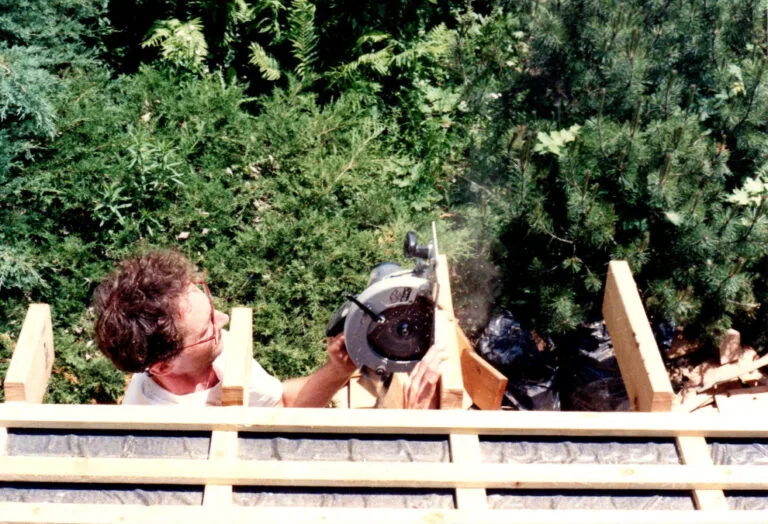I found carpentry skills to come naturally, having enjoyed shop class back in high school. There was a pleasant fusion of left and right brain thinking involved in laying out a project, problem-solving, and the craft of measurement, cutting, fitting and finishing. There were plenty of tough moments and mistakes, but it’s the satisfaction of process that I remember most. When the work is going well you enter a meditative zone, created by the synthesis of hands and heart. More recently working on my own D.I.Y. projects around the house, I find that the balance has shifted. I think it’s the difference between having the full attention of time, space, and tools that I had as a carpenter, vs. a more haphazard approach I find as a weekend warrior. The satisfaction of craft is still there, but it takes more effort to drop into a focused and unhurried pace, creating the space for satisfying work and results.
We picked up many skills along the way, from cutting and patching, to drywall taping, to working with subcontractors. We also rented space for a shop and so were able to create built-ins and other custom elements for projects. One develops an appreciation for each trade and what’s expected, a.k.a. the industry standard. Yet there is a wide range of construction materials and qualities of assembly available, so one finds a territory of comfort in which to work. A limited budget could bring us down to the low end of the spectrum, but below that we had to turn work away. It was important and sometimes challenging to find subcontractors who worked in a similar range, with a kind of shared ethos. With carpentry and other skilled trades, there is a tendency toward a high level of craftsmanship no matter the budget. With experience we learned to estimate closer to that bar, and include a level of profit that’s essential for a small business to survive.
